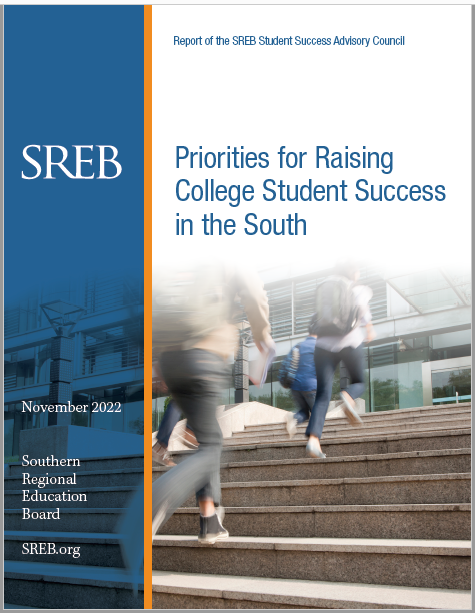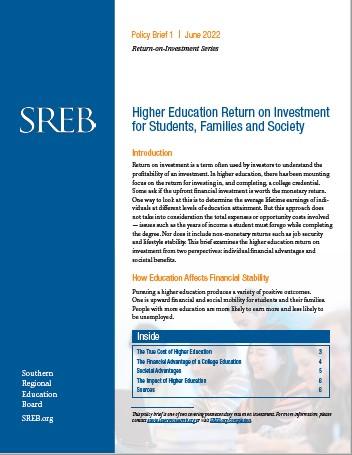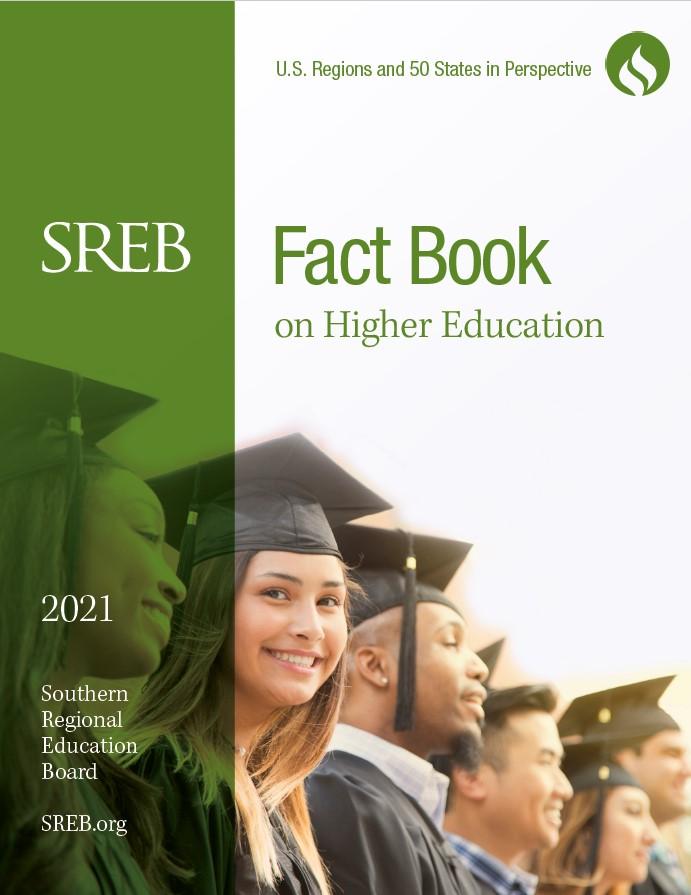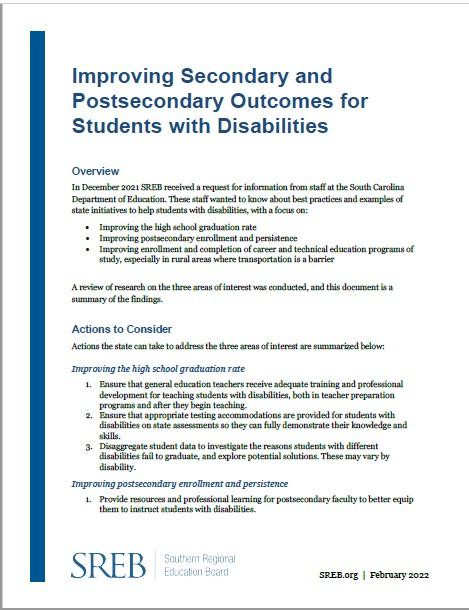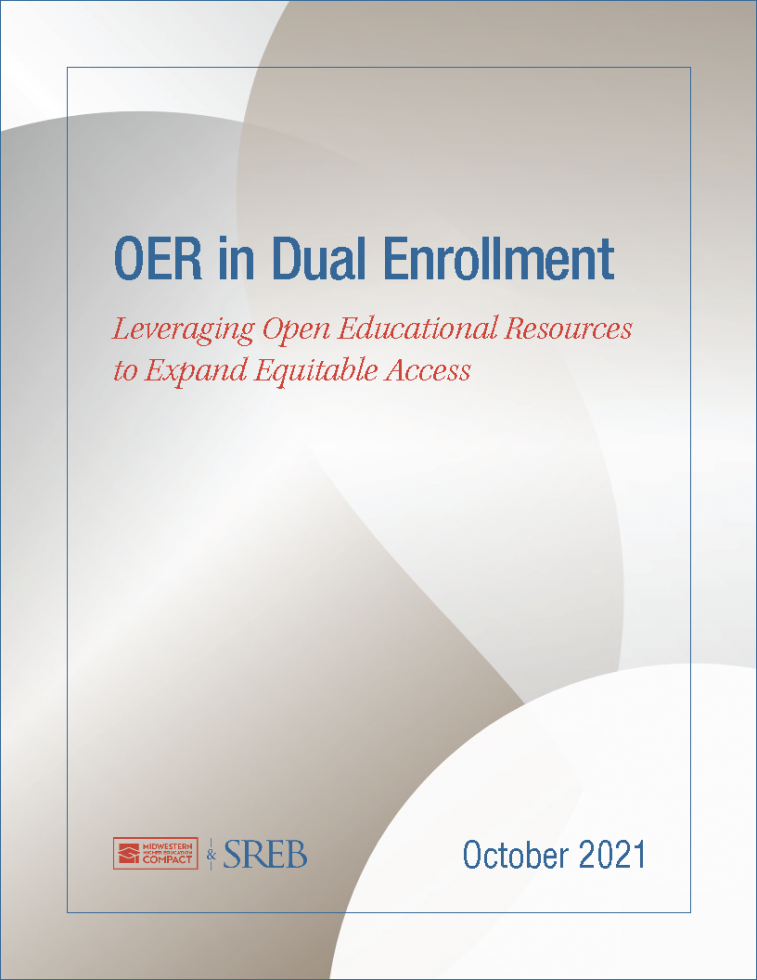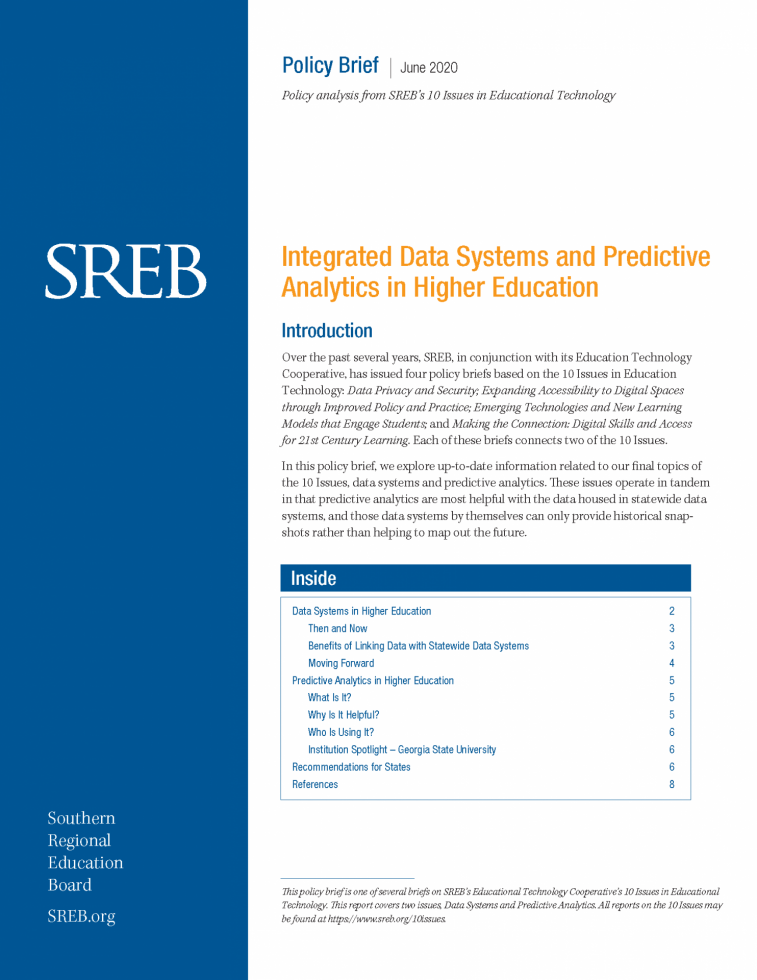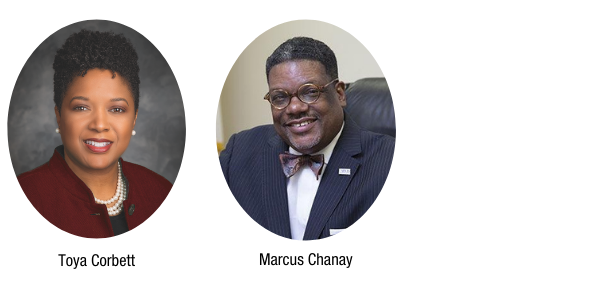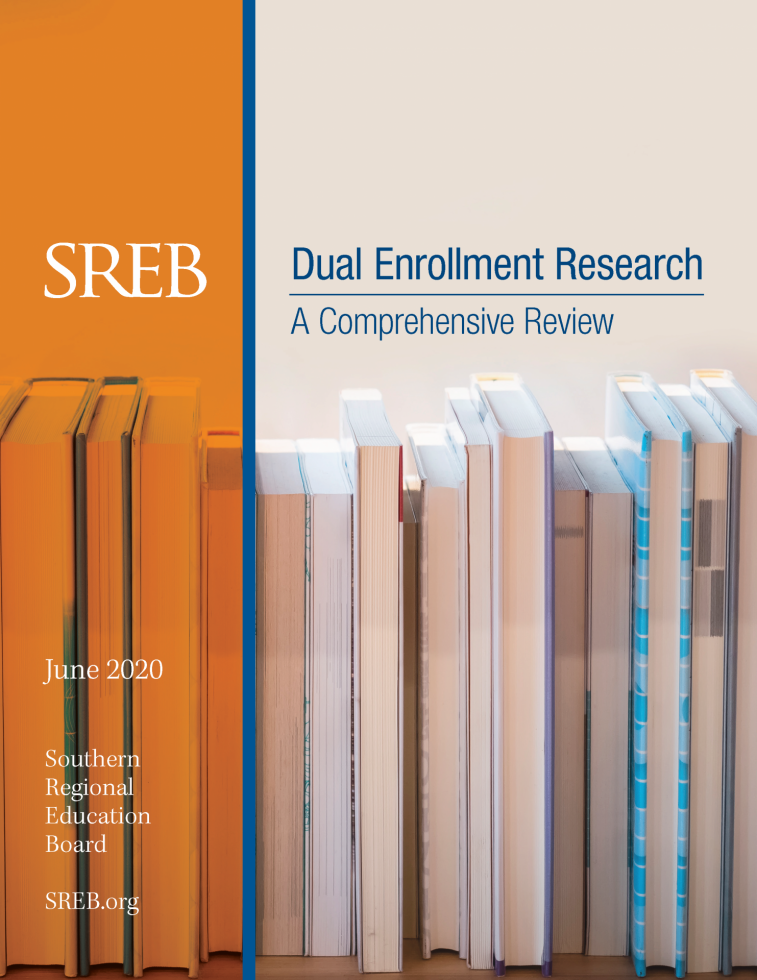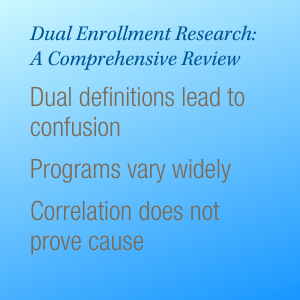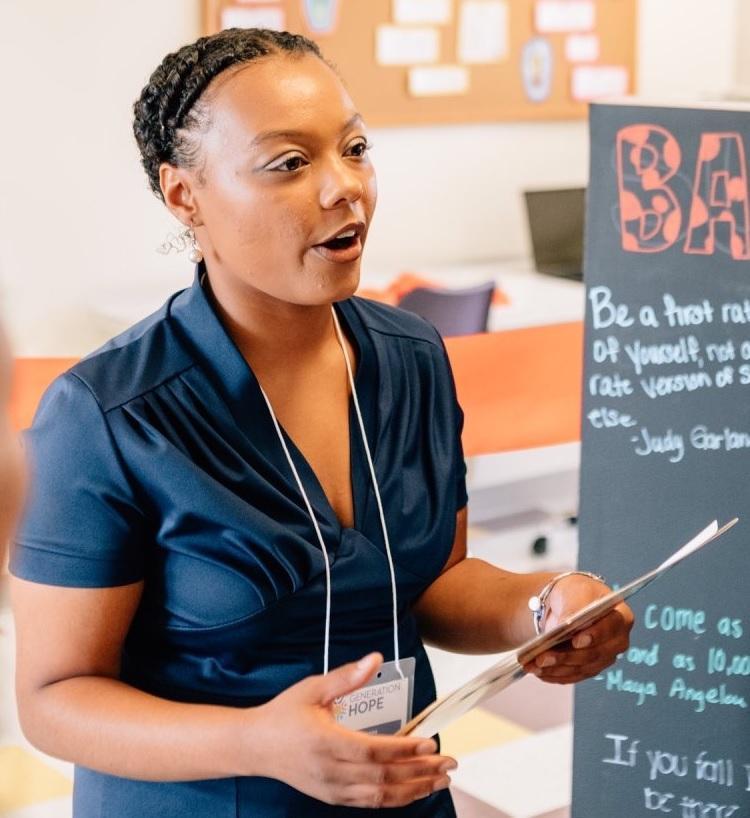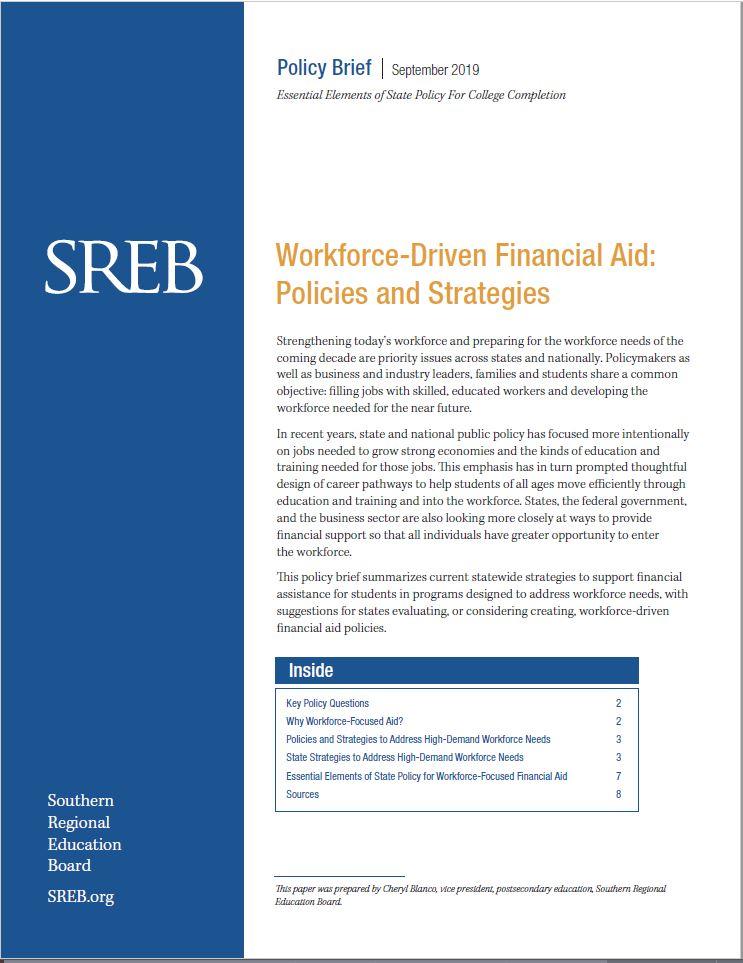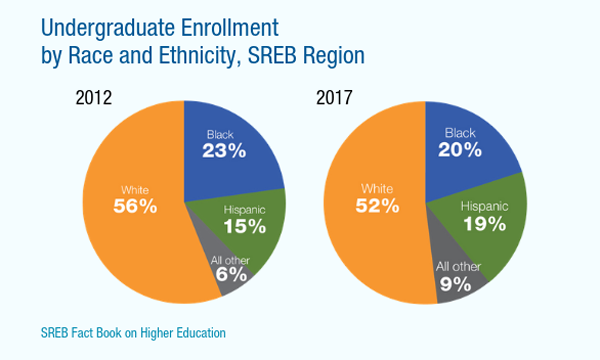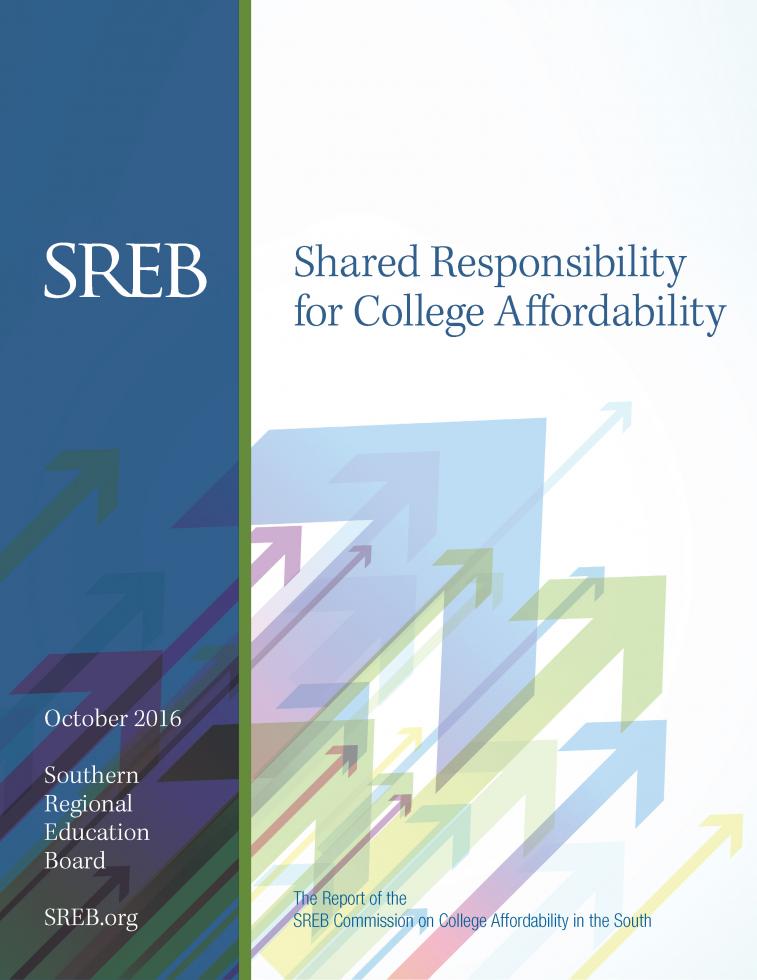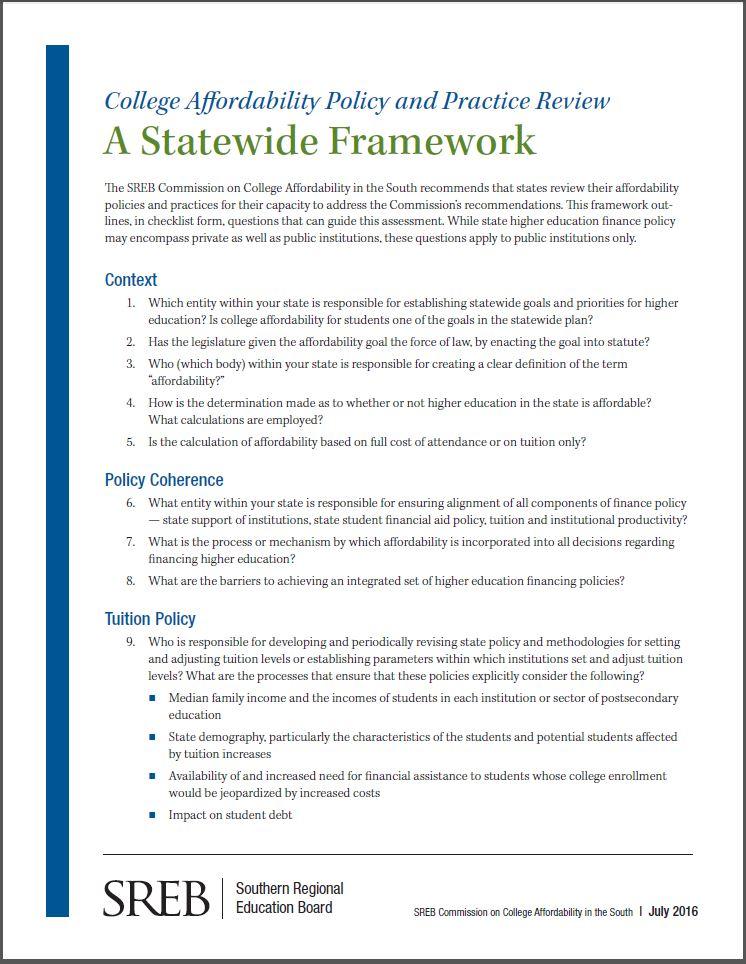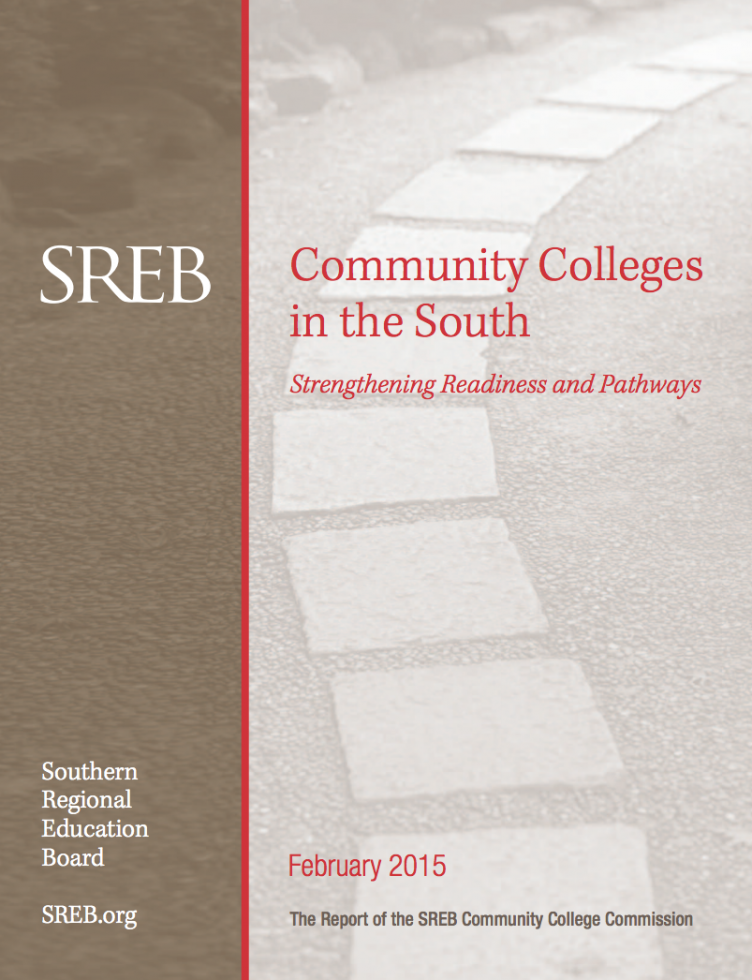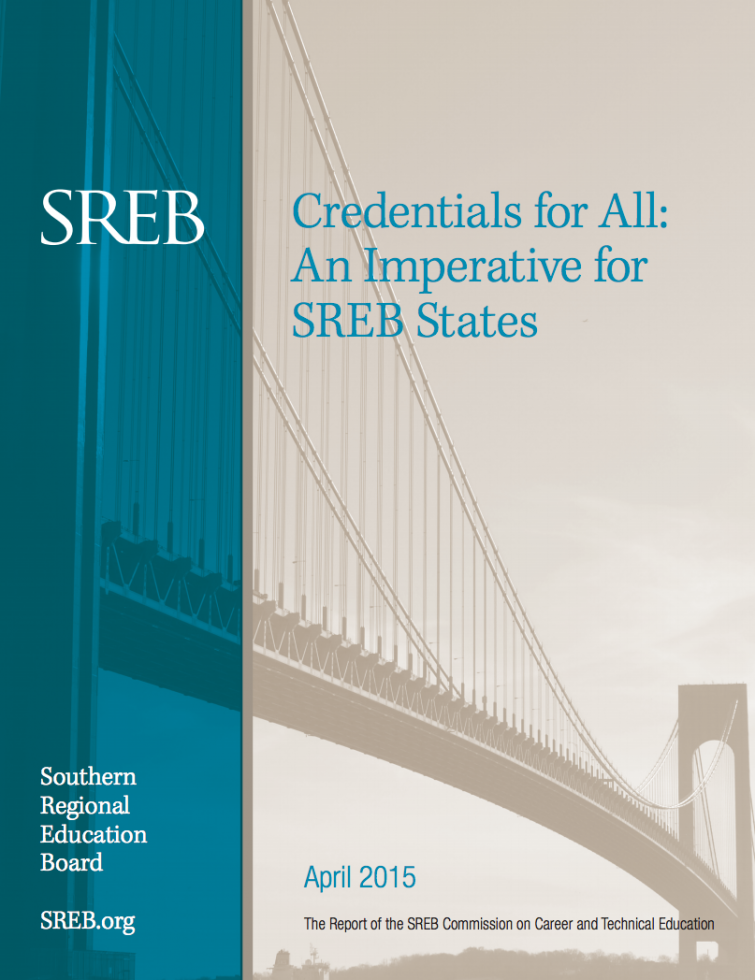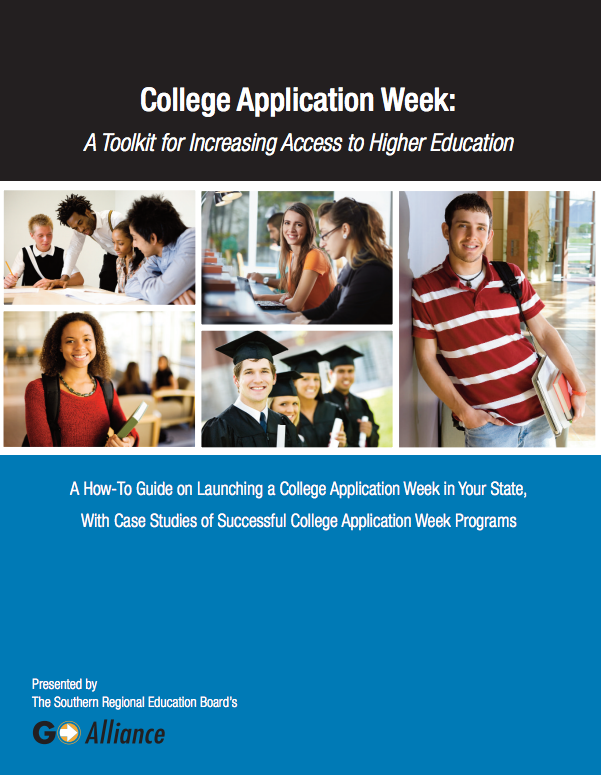Education Level: Postsecondary
Postsecondary
A credential of value after high school is an imperative in today’s workforce. States and postsecondary institutions must enroll more students, make college affordable, and focus policy and practice on helping more students complete degrees and succeed in careers.
Tuition savings and online degrees
SREB programs for specialized and distance education
In-state tuition at out-of-state colleges
Academic Common Market
In-state tuition for health professional degrees
Regional Contract
Program
A nationwide network of online courses and programs
SARA (State Authorization
Reciprocity Agreement)
Wiring the Future
Building an Infrastructure for Broadband Access
In today’s technology-driven world, reliable broadband access is critical for student success. Whether completing online assignments, attending virtual classes or accessing educational resources, students depend on fast and stable internet connections to fully engage with digital educational tools. Schools and universities increasingly use digital platforms to house course content, assignments and discussion boards. Without adequate broadband access, students face significant barriers to learning.
Priorities for Raising College Student Success in the South
Report of the SREB Student Success Advisory Council
The report of SREB’s Student Success Advisory Council offers 10
recommendations to improve the success of students in
postsecondary education, particularly those from demographic
groups that have been underrepresented in higher education
historically. After examining the challenges of affording
college, navigating and persisting to graduation, and beginning a
career, the report outlines specific ideas for both states and
postsecondary institutions.
DOWNLOAD PDF
Priorities for Raising College Student Success in the South
View the recording >
College student success is central to both the professional workforce and the prosperity of individuals today and tomorrow. Join members of SREB’s Student Success Advisory Council as they discuss strategies with the best potential to impact individual and collective postsecondary success.
Higher Education Return on Investment for Students, Families and Society
With mounting focus on the return on investing in a college degree, this brief shows how the benefits outweigh the costs to individuals, communities and society. A postsecondary credential remains a profitable investment for individuals, who in general earn more and are less likely to be unemployed, as well as for economies that need a highly skilled workforce and residents who contribute to society.
2021 SREB Fact Book on Higher Education
The SREB Fact Book on Higher Education includes data on the population and economy, enrollment, degrees, student tuition and financial aid, faculty and administrators, revenue and expenditures. With more than 100 tables of detailed information, the Fact Book is one of the nation’s most respected and most comprehensive collections of comparative data on higher education.
- Cover and Highlights
- Message from the SREB President, Acknowledgements, List of Graphs and Tables
- Introduction
- Population, Economy, Schools and Government
- College Participation
- College Completion
- College Affordability
- Faculty and Administrators
- Revenue and Expenditures
- Appendix A
- Appendix B
- Read more
Improving Secondary and Postsecondary Outcomes for Students with Disabilities
How can states, schools and colleges help students with disabilities to improve high school graduation rates, postsecondary success, and career and technical education participation?
This piece, produced for a request from a state department of education, includes actions to consider, examples from SREB states and a review of current research on professional development, educational technology and individualized instruction.
OER in Dual Enrollment
Leveraging Open Educational Resources to Expand Equitable Access
The number of high schools offering dual enrollment or concurrent enrollment courses has grown significantly over the past decade. However, gaps in student access and participation persist. This report from SREB and the Midwestern Higher Education Compact examines how the use of open educational resources, or OER, can make dual enrollment courses more cost-effective and increase college access for more students. The report provides an overview of policies across 50 states and recommendations on OER adoption and usage.
Making a Case for Student Success
Open Educational Resources in Dual Enrollment and CTE
September 22, 2021
11 am Eastern
View the webinar recording
This session explored solutions to integrate open educational resources in dual enrollment and career and technical education that lead to student success in both K12 and higher education.
This session is part of SREB’s Open Educational Resources in Dual Enrollment webinar series.
The Cost of OER and Return on Investment
Open Educational Resources in Dual Enrollment
View the webinar recording
This session was held to help decision-makers on all levels — state, higher education institutions and K12 schools and districts — better understand the perceived costs of open educational resources, cost-savings, and the return on investments.
This session is part of SREB’s Open Educational Resources in Dual Enrollment webinar series.
The webinar session covered the following topics:
SREB Region
College Affordability Profile
By 2031, an average of 64% of jobs in the SREB region will require a postsecondary credential. Ensuring college remains affordable is more critical than ever to prevent financial barriers from limiting students’ access to higher education and to strengthen the region’s workforce and economy. The College Affordability Profiles provide data-driven insights for all 16 SREB states, supporting state and local efforts to expand access to quality higher education.
Integrated Data Systems and Predictive Analytics in Higher Education
This policy brief explores how data systems and predictive analytics work in tandem to provide colleges and universities the data necessary to map out the future. Through aligned data systems and data definitions, higher education entities can make better data-based decisions and gain substantial returns on investments.
Supporting College Students During COVID-19
Postsecondary Webinar Series
View the webinar recording
Colleges and universities have had to rethink the way they engage students during the COVID-19 pandemic, from enrollment through graduation. Hear about innovative practices from student affairs leaders at the University of North Carolina System and Lincoln University of Missouri.
Dual Enrollment Research
A Comprehensive Review
Part of the ongoing work of SREB’s Dual Enrollment Initiative, this comprehensive review is intended to help policymakers better understand what the research tells us (and what it doesn’t) about dual enrollment. The research analyzes more than 500 journal articles, master’s theses, doctoral dissertations, web documents and books from 1959 to 2019.
Data, Definitions Limit What We Know About Dual Enrollment
SREB publishes comprehensive review of research
States need better data to measure whether dual enrollment programs are realizing their promise, says a review of existing research published by the Southern Regional Education Board this week.
To determine return on investment and improve dual credit programs, states will need to clarify their goals, be sure policies support them, and collect data that connects students’ K-12 and postsecondary experiences.
How colleges can better serve student-parents
One in five U.S. undergraduates now raising children
More of today’s college students are raising children while in school, and they’re a larger, faster-growing group than many colleges institutions and policymakers realize.
Nicole Lynn Lewis, the founder and CEO of Generation Hope, joined SREB for a webinar on June 11 to discuss how institutions can build and strengthen support for student-parents. Her organization assists teenage parents—men and women—who attend college in Virginia, Maryland and the District of Columbia.
Workforce-Driven Financial Aid: Policies and Strategies
Essential Elements of State Policy For College Completion
The rapidly evolving workplace has created a shortage of skilled and educated workers in many fields, leaving essential jobs unfilled and millions of adults unqualified for them. This policy brief summarizes statewide strategies to support financial assistance for students in programs designed to address workforce needs. It includes suggestions for states that are evaluating, or considering creating, workforce-driven financial aid policies.
SREB Launches Dual Enrollment Initiative
The Southern Regional Education Board has launched a multi-year initiative to help states address concerns and opportunities in dual enrollment.
With an advisory panel of members from schools, universities, agencies and legislatures across the SREB states, the project will explore how dual enrollment can:
Postsecondary Trends Threaten Workforce Needs
Fact Book Documents Challenges to Education Attainment Goals
Postsecondary attainment continues a slow climb in the South,
according to the 2019 Fact Book on Higher
Education.
Population and college enrollment trends are beginning to slow at
a time when advancing technology and artificial intelligence are
shifting the workplace to demand higher-level skills. And
affordability remains a stubborn challenge to students and
families and to states trying raise state education attainment
levels to grow their economies.
Shared Responsibility for College Affordability
Report of the SREB Commission on College Affordability in the South
The Commission offers eight policy recommendations for affordability, grounded in a shared responsibility model where states, families, colleges and the federal government each play a role. The report charts trends and data on educational attainment, workforce needs, student diversity, family income, student debt, higher ed funding, tuition, net price, financial aid and more. An appendix offers questions to help states begin reviews of their policies and practices.
College Affordability
Promising State Policies and Practices
This report explores promising or innovative state programs that aim to improve college affordability and credential attainment — and bear watching to see if they result in meaningful outcomes. Prepared for SREB’s Commission on College Affordability in the South.
A Statewide Framework
College Affordability Policy and Practice Review
The SREB Commission on College Affordability in the South recommended that states review affordability policies for capacity to make postsecondary education more affordable for students and families. This framework outlines, in checklist form, questions to guide the review. Questions cover governance, aligning policies toward affordability, tuition policy, need-based student financial aid, student debt, investing in innovation, and shared responsibility among states, agencies, institutions and families.
Part-Time Students = 38% of Undergrads
Affordability Commission focuses on needs of adult and part-time students
Part-time college students made up 38 percent of undergraduates
in SREB states by 2013. Many part-time students work to pay their
living expenses as well as tuition, and the more hours they work,
the longer it takes them to finish, on average. Part-timers are
eligible for less financial aid, and they tend to file later,
missing early deadlines.
Community Colleges in the South: Strengthening Readiness and Pathways
Report of the SREB Commission on Community Colleges
The full report of SREB’s Community College Commission offers 21 recommendations for states and community colleges. It presents findings on readiness, placement, math standards and structurally guided pathways to help students clearly see entry, exit and re-entry points to continue their education. Recommendations ask states to commit increased funding and hold colleges accountable for improving student services and completion. The goal: increase college access and success so more students earn postsecondary credentials and enter careers in demand in their communities.
Credentials for All: An Imperative for SREB States
SREB’s Commission on Career and Technical Education offered eight actions states can take to build rigorous, relevant career pathways. Supported by policies and practices described in the report, these actions can help states increase the percentage of young adults earning valuable industry and postsecondary credentials.
Pathways to Opportunity
High School to College and the Workplace
Labor market economists project that by 2020, two-thirds or more of all jobs will require some postsecondary education — either a certificate, a credential or a degree at the associate level or higher.
Promising Affordability Practices in Oklahoma, Tennessee
What the research tells us
SREB’s Commission on College Affordability in the South convened in New Orleans in December 2014 for its second meeting to focus state policies on increasing the students’ ability to pay for and complete college. Members learned what the research tells us about affordability’s effects on enrollment and completion and heard about promising practices in two states, Oklahoma and Tennessee.
College Application Week: A Toolkit for Increasing Access to Higher Education
A how-to guide for state leaders who want to establish a College Application Week in public high schools. The toolkit includes best practices, tips and strategies, and case studies of College Application Week programs under way in SREB states. College Application Week programs are campaigns to help high school students — particularly those who would be the first in their families to go to college or those not planning to attend college — apply to at least one postsecondary institution during their senior year.




